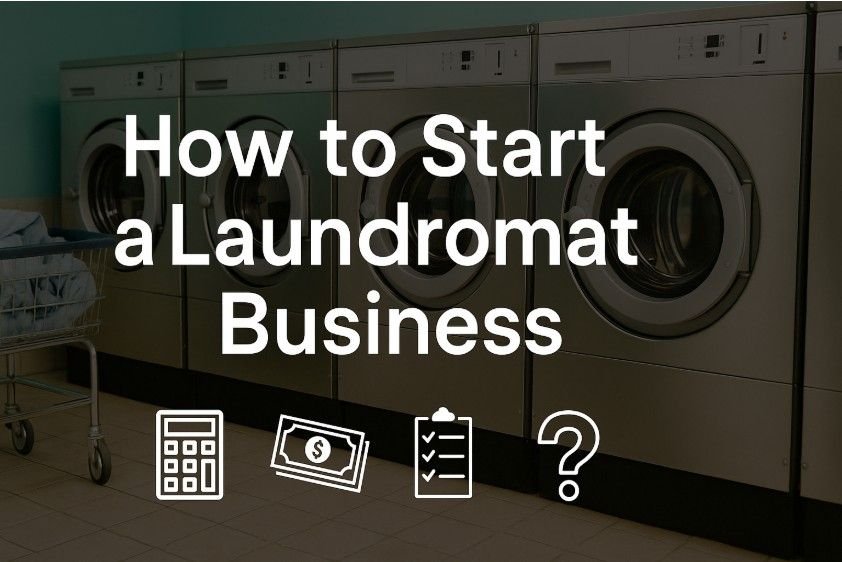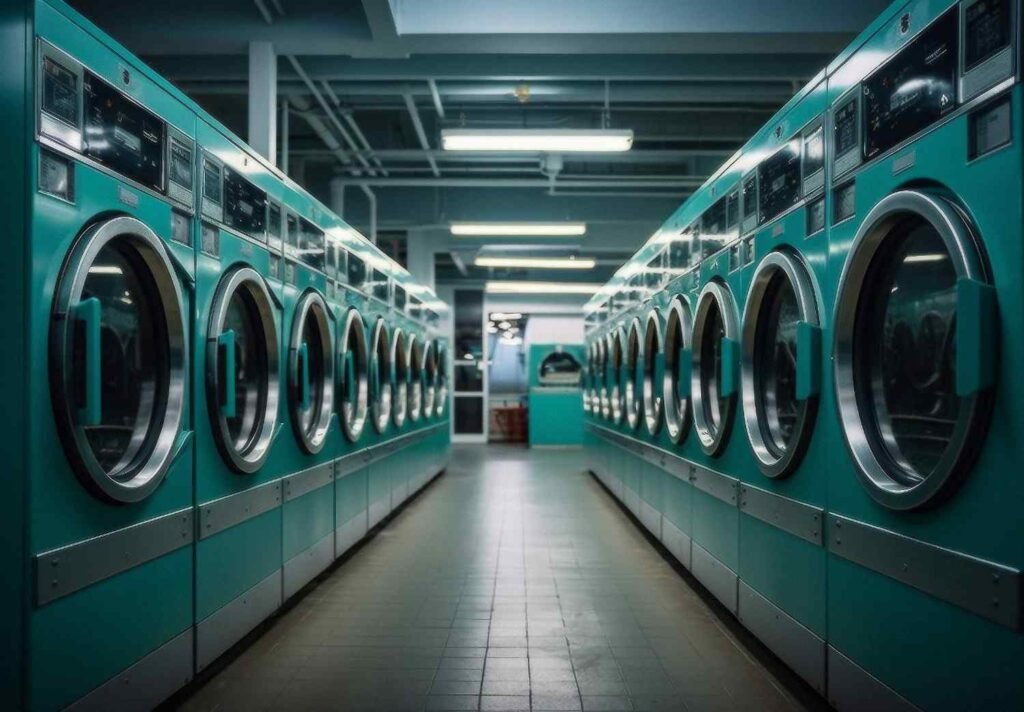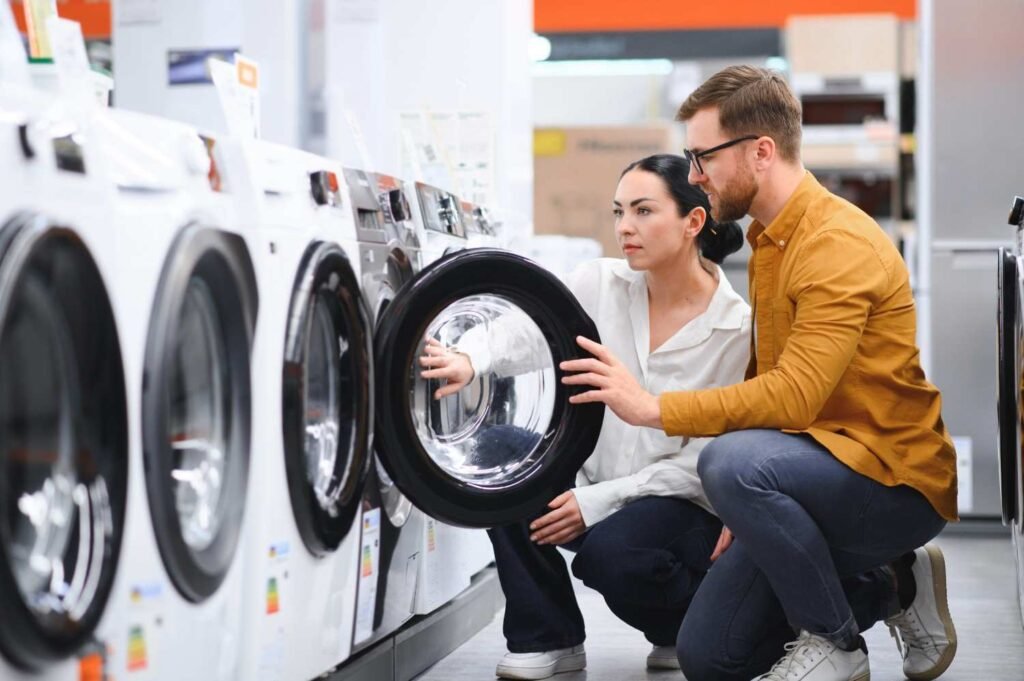
If you’ve ever sat in a busy coin laundry on a Sunday night and thought, “I should own one of these,” you’re not alone. Learning how to start a laundromat business appeals to many new and mid-career entrepreneurs because it looks simple, stable, and scalable. And honestly? It is far more straightforward than most brick-and-mortar ventures—if you plan it right.
In this guide, I walk you through what actually matters: startup costs, profitability, legal steps, market research, and the operational decisions that make the difference between a thriving neighborhood spot and a row of machines that barely cover utilities.
Is a Laundromat Business Really a Good Idea Right Now?
Before you dive into how to start a laundromat business, it’s worth asking if the industry is still strong. Industry reports show the global laundromat and self-service laundry market generates more than $48 billion annually, with stable year-over-year growth. This is backed by the fact that laundry is a basic, non-negotiable need — making the business fairly recession-resistant.
On a local store level, many laundromats generate around $150,000 in annual revenue, with profit margins between 20% and 35% in well-managed operations. These margins remain solid even in tough economies because people will always need clean clothes.
But the key phrase here is “well-managed.” Poor site selection, aging machines, and overpriced utilities can take a profitable model and drag it into the red. With the right planning, this industry becomes predictable and surprisingly stable.

How to Start a Laundromat Business: What Planning Comes First?
Before choosing machines or signing leases, you need clarity on demand in your area.
Good planning starts with ground-level research. Walk or drive around your target neighborhoods. Count competing laundromats, observe how busy they are on weeknights and weekends, note the machine types, pricing, and overall store conditions. Markets with many renters, small apartments, or older multi-unit buildings tend to have the best customer base.
How Do You Research Your Laundromat Market?
A defined two- to three-mile radius analysis works best. Start with demographics: areas with renter-heavy populations, lower in-unit washer/dryer availability, and consistent population turnover tend to perform well. Then evaluate nearby apartment complexes to see whether they offer laundry rooms — and their condition.
Publicly available census data and your city’s planning website can help you track new developments. If new apartment buildings without in-unit laundry are coming, demand may increase. Conversely, luxury developments with in-unit washers could reduce your future traffic.
Which Laundromat Business Model Fits Your Area?
Once you understand demand, decide how you want to serve it. A laundromat doesn’t have to be just coin-operated machines. You can choose between:
- Self-service only
- Wash-and-fold service
- Pickup and delivery
- A hybrid model
Student-heavy areas tend to respond well to low-cost self-service. Dense urban neighborhoods with working professionals often favor premium wash-and-fold and delivery options. Your model should follow what your market research reveals — not what other cities do.
What Does It Cost to Open a Laundromat?
Understanding costs early prevents surprises. Laundromats are capital-intensive, but predictable.
Startup costs typically range from $100,000 to $350,000, depending on whether you are buying an existing location or building one from scratch. High-end builds in competitive urban areas can run closer to $500,000. Buying an older laundromat may reduce upfront spending but can result in higher maintenance and utility costs.

What Major Expenses Should You Expect?
Your biggest investments will include:
- Commercial washers and dryers
- Water heater systems
- HVAC and ventilation
- Plumbing and electrical upgrades
- Interior build-out and finishes
- Payment systems
- Initial working capital
It’s also smart to budget for 6–9 months of operating expenses, especially if you’re borrowing money.
How Do You Choose the Right Location and Equipment?
Before signing a lease, confirm the building can support heavy water lines, drainage needs, and electrical loads. Upgrading infrastructure can add tens of thousands to your total cost, so a structurally suitable location can save you money.
Visibility, safety, parking, and foot traffic are also important. Laundromats in anchored shopping plazas—near grocery stores, pharmacies, and discount retailers—tend to perform best.

What Makes a Strong Laundromat Location?
Look for:
- High renter density
- Limited in-unit laundry in nearby housing
- Convenient parking
- Good lighting and security
- Nearby complementary businesses
A clean, safe environment significantly increases repeat visits. Your location should make customers feel comfortable staying for an hour or more.
How Should You Choose Your Equipment and Payment System?
Most modern laundromats use high-efficiency front-load washers because they reduce water and electricity usage. They also generate more revenue per cycle and break down less often than older top-load models.
For payments, customers expect flexibility: cards, mobile apps, and coins. Many owners install systems that allow them to monitor machine usage, errors, and revenue remotely — crucial for semi-absentee owners.
How Will You Finance, Staff, and Market Your Laundromat?
Once you’ve selected your model and location, financing becomes the next major step.
You can use personal funds, business loans, SBA-backed loans, equipment financing, or investors. Equipment distributors often provide financing packages, but always compare total long-term costs with bank loan options.
Staffing depends on your model — unattended stores cut payroll but reduce service offerings. Attended stores create opportunities for profitable wash-and-fold services.
Marketing should focus on local visibility, especially online. A Google Business Profile, photos of your clean space, updated hours, and consistent review responses can dramatically improve foot traffic.
How-To Checklist: Steps to Launch Your Laundromat
Here’s a simplified roadmap to stay organized:
- Study your local market.
- Identify the laundromat model that fits your area.
- Build a realistic business plan with cost projections.
- Form a legal entity (commonly an LLC).
- Secure the right location.
- Obtain necessary permits and inspections.
- Buy and install equipment and payment systems.
- Hire staff if needed.
- Launch with local promotions and online visibility.
Frequently Asked Questions
1. How much does it cost to start a laundromat business?
Most investors spend between $100,000 and $350,000 to open a laundromat in the US. Costs vary depending on equipment quality, store size, build-out complexity, and whether you’re buying or creating a new build.
2. Is owning a laundromat profitable?
Yes — when managed properly. Many stores operate with 20–35% profit margins, with average annual revenues around $150,000. The key factors are location, machine efficiency, pricing, and utility management.
3. How long does it take to break even?
The average payback period is 3–5 years. Stores with high debt or expensive construction tend to take longer, while those with strong foot traffic or upgraded older locations may reach profitability sooner.
4. Do I need prior experience to open a laundromat?
No experience is required, but a willingness to learn equipment maintenance, local regulations, and customer service is essential. Many owners rely on equipment distributors and consultants when starting out.
Ready to Learn How to Start a Laundromat Business and Take the First Step?
By now, you not only understand how to start a laundromat business, but also what separates successful stores from the ones that struggle. The opportunity is real if you plan wisely: choose the right market, invest in efficient equipment, map out your operating costs, and create a clean, safe space that people trust.
If the numbers make sense for your city, your next move is to refine your business plan and begin scouting locations. Turning a basic human necessity into a stable cash-flow business is entirely possible — and your future customers are waiting.





